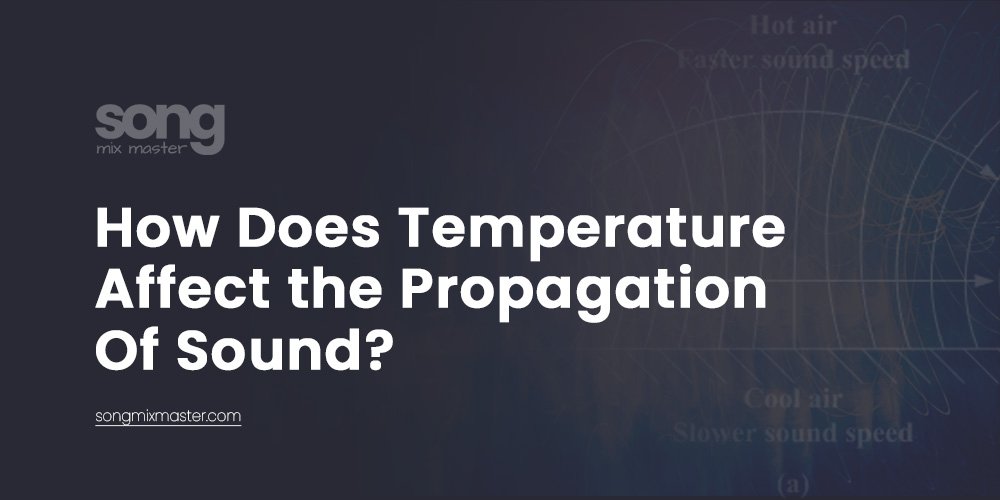Tutorials
How Does Temperature Affect the Propagation of Sound?
Acoustic Engineering: Sound Propagation and Temperature
In this article, we aim to explain how temperature affects the propagation of sound and the acoustic phenomena it involves, such as why sometimes we can hear sound more clearly at night than during the day.
When sound propagates in an outdoor environment, various meteorological factors, such as temperature, wind speed, and relative humidity, can significantly influence its propagation. Consequently, the perception of sound can vary based on the weather and environmental conditions, resulting in effects like sound traveling more easily over snow-covered ground or the appearance of acoustic shadows around a highway on a sunny afternoon.

There is a direct relationship between the speed at which sound propagates and the air temperature: the higher the temperature, the faster the speed of sound. Moreover, this dependency causes sound waves to curve their trajectory when the temperature varies with altitude, either facilitating or hindering propagation.
This temperature variation with height is known as the temperature gradient, and there are three basic situations: negative gradient (decreasing temperature with height), positive gradient (increasing temperature with height), and stepped gradient (a combination of more than one gradient). In the presence of a temperature gradient, sound tends to curve towards the direction of lower sound speed.
Below, we will briefly explain the implications of each situation.
Negative Temperature Gradient
This is the most common and predominant at large scales, as it is always colder at higher altitudes than at lower ones. This is typical of a sunny afternoon when the sun has heated the surface layers of the ground for hours, transferring temperature from the ground to the adjacent layers of air. In this case, sound waves will curve upwards from the noise source, creating a circular shadow zone around the source.
Positive Temperature Gradient
This situation, also known as thermal inversion, implies that the temperature increases with altitude and is common at night when the air in contact with the surface cools rapidly because the ground absorbs the heat. This situation can also occur on a sunny day over snow or water. It usually lasts only until a certain height, after which the gradient returns to negative.
In this case, sound waves will curve towards the ground, eliminating the shadow zone and potentially increasing the sound level by 5 to 6 dBA compared to the usual negative gradient. This effect explains why sound travels much better at night, as its propagation tendency is along the ground instead of radiating upwards.
Stepped Temperature Gradient
This is a less common and short-lived situation, typically occurring at dawn or during weather changes. It usually starts with a negative gradient, followed by a positive section, and then another typical negative gradient. Sound wavefronts tend to curve according to the gradient’s sign, resulting in a “tunnel effect” and potentially causing both shadow zones and channels where the propagation distance can be very long.

Understanding these phenomena is crucial to conducting reliable noise measurements for acoustic engineers. An engineer who does not account for these factors could obtain significantly different results depending on the measurement time: measurements taken on a sunny afternoon will usually yield lower values, whereas measurements taken on a cloudy day, at dusk, or at night will be more representative of the equivalent level.
Predicting how these effects alter the expected noise level at a given receiver is complex. Although some propagation models specify how sound speed varies with height (e.g., Nord2000 or Harmonoise), the current common trend (e.g., ISO 9613-2 model) is to calculate noise levels while ignoring the existence of acoustic shadow zones.
Consequently, predictions made using common models (software like CadnaA ©, Predictor – LimA ©, SoundPLAN ©) will always be more representative of a moderate thermal inversion situation (as typically occurs at night) or the “average” equivalent level obtained from a long-duration measurement.
Importance for Sound Engineers
While temperature effects on sound propagation are more critical in outdoor settings or large venues, understanding these principles can still benefit sound engineers in studio environments, especially those working on location or dealing with acoustic challenges.
Maintaining a stable temperature in the studio helps ensure consistent sound quality. Rapid temperature changes can affect the studio equipment and the perception of sound, leading to inaccurate mixing and mastering decisions.
Understanding how temperature and humidity affect sound propagation can guide decisions on acoustic treatment. Proper insulation and climate control can mitigate unwanted acoustic anomalies.
Ensuring that mixes translate well across different environments requires an awareness of how temperature variations might affect sound. For example, a mix that sounds perfect in a warm, controlled studio might behave differently in a cold, open-air venue.
Understanding temperature effects is crucial for sound engineers working on live recordings or outdoor events. It helps position microphones and speakers to achieve the best sound capture and delivery.
By understanding these effects and implementing best practices, professional sound engineers can ensure more accurate and reliable sound measurements, leading to better environmental noise assessments and management.


Disclaimer: Any references to any brands on this website/webpage, including reference to products, trademarks, brands and companies, are provided for description purposes only. We don't have any association with or endorsement by these brands or companies. Some of the links on our blog may be affiliate links. This means if you click on these links and make a purchase, we may earn a commission at no extra cost to you.
Need Professional Mixing & Mastering?
You may also like to read...
Mastering for Spotify: Achieving the Perfect LUFS Level
How To Prepare Your Song For AI Music Mastering
Audio Clipping in Music: Causes, Consequences, and Solutions
How to Widen Your Mix: Tips for Stereo Imaging
How to Use Mid/Side EQ with FL Studio’s Stock Plugins
5 Tips for Using The Reverb Effect in Music Production